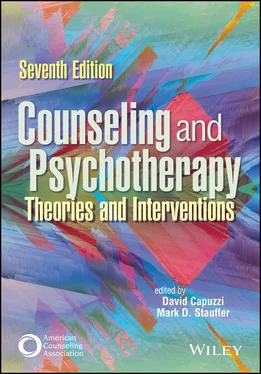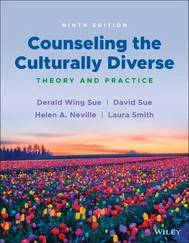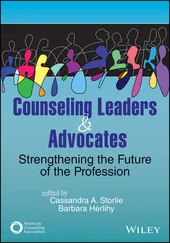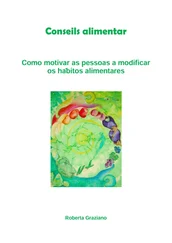Counseling and Psychotherapy
Здесь есть возможность читать онлайн «Counseling and Psychotherapy» — ознакомительный отрывок электронной книги совершенно бесплатно, а после прочтения отрывка купить полную версию. В некоторых случаях можно слушать аудио, скачать через торрент в формате fb2 и присутствует краткое содержание. Жанр: unrecognised, на английском языке. Описание произведения, (предисловие) а так же отзывы посетителей доступны на портале библиотеки ЛибКат.
- Название:Counseling and Psychotherapy
- Автор:
- Жанр:
- Год:неизвестен
- ISBN:нет данных
- Рейтинг книги:4 / 5. Голосов: 1
-
Избранное:Добавить в избранное
- Отзывы:
-
Ваша оценка:
- 80
- 1
- 2
- 3
- 4
- 5
Counseling and Psychotherapy: краткое содержание, описание и аннотация
Предлагаем к чтению аннотацию, описание, краткое содержание или предисловие (зависит от того, что написал сам автор книги «Counseling and Psychotherapy»). Если вы не нашли необходимую информацию о книге — напишите в комментариях, мы постараемся отыскать её.
Counseling and Psychotherapy — читать онлайн ознакомительный отрывок
Ниже представлен текст книги, разбитый по страницам. Система сохранения места последней прочитанной страницы, позволяет с удобством читать онлайн бесплатно книгу «Counseling and Psychotherapy», без необходимости каждый раз заново искать на чём Вы остановились. Поставьте закладку, и сможете в любой момент перейти на страницу, на которой закончили чтение.
Интервал:
Закладка:
Table of Contents
1 Cover
2 Title Page
3 Copyright Page Copyright © 2022 by the American Counseling Association. All rights reserved. Printed in the United States of America. Except as permitted under the United States Copyright Act of 1976, no part of this publication may be reproduced or distributed in any form or by any means, or stored in a database or retrieval system, without the written permission of the publisher. American Counseling Association 2461 Eisenhower Avenue, Suite 300 ■ Alexandria, VA 22331 Associate Publisher ■ Carolyn C. Baker Digital and Print Development Editor ■ Nancy Driver Senior Production Manager ■ Bonny E. Gaston Copy Editor ■ Elaine G. Dunn Cover and text design by Bonny E. Gaston. Library of Congress Cataloging-in-Publication Data Names: Capuzzi, Dave, editor. | Stauffer, Mark D., editor. Title: Counseling and psychotherapy : theories and interventions / edited by David Capuzzi and Mark D. Stauffer. Description: Seventh edition. | Alexandria, VA : American Counseling Association, [2022] | Includes bibliographical references and index. | Identifiers: LCCN 2021052713 | ISBN 9781556204104 (paperback) Subjects: LCSH: Counseling. | Psychotherapy. | Counseling—Case studies. | Psychotherapy—Case studies. Classification: LCC BF637.C6 C634 2022 | DDC 158/.3—dc23/eng/20220103 LC record available at https://lccn.loc.gov/2021052713
4 Preface
FEATURES OF THE BOOK FEATURES OF THE BOOK This book is designed for students who are beginning their study of individual counseling and psychotherapy. It presents a comprehensive overview of relational-cultural, psychodynamic, Jungian, Adlerian, existential, person-centered, Gestalt, cognitive behavioral, third-wave cognitive behavioral, rational emotive, reality therapy/choice, family, feminist, constructivist, and emotion-focused theories, along with a discussion of how to use creative approaches in the context of those theories. We know that one book cannot adequately address all the factors connected with a given theory; entire texts have been written discussing each of the theories in this book. We have, however, attempted to provide readers with a consistent approach to analyzing and studying each theory and have included examples of how to apply the theory to the case of Clarita. The format for the book is designed so that readers can compare how adherence to a theory influences the counseling and treatment plan. Each chapter contains theoretical and applied content. The theories presented are bookended by an opening chapter on the helping relationship and an ending chapter on using creative approaches in the context of counseling and psychotherapy.
THE FORMAT FOLLOWED FOR CHAPTERS 2–17 THE FORMAT FOLLOWED FOR CHAPTERS 2–17 As noted earlier, we wanted the reader to be able to make comparisons between and among the theories by having all the contributors follow the same outline and develop a treatment plan, focused on goals, for one hypothetical client named Clarita. The authors of Chapters 2 through 17 followed the outline below as they discuss each theory in relation to the case study of Clarita. 1 BackgroundThis section includes historical information related to the development of the theoretical system and the individual(s) responsible for its development. 2 Human Nature: A Developmental Perspective (primary)This section discusses how the theory defines an individual’s developmental process over time. 3 Major ConstructsThis section includes the structural components of the theory. 4 ApplicationsThis section includes the following secondary areas:Overview: An introduction to the five areas that follow.Goals of counseling and psychotherapy: A description of desired client outcomes based on the tenets of the theory.The process of change: The factors within the theory that address what brings about change in the individual.Techniques and interventions: Techniques for implementing the process of change. The chapter authors name and describe five to six specific traditional and current techniques and interventions.Brief intervention strategies: Techniques and interventions for implementing the process of change using a brief approach.Clients with serious mental health issues: A discussion of how the theory applies to counseling clients with mental disorders. The chapter authors delineate and discuss what types of mental disorders can be successfully “treated” using this theoretical approach. 5 Supporting Research and LimitationsThis section includes the following secondary areas:Overview: An introduction to the two areas that follow.Supporting research: Current research studies that form the bases for continued use of this theoretical system.Limitations: A description of the factors that limit the use of this theoretical system with clients and types of presenting problems. 6 The Case of Clarita: ApproachThis section includes a case study writeup consistent with the theory and emphasizes the goals and interventions/techniques that will be used when counseling Clarita. The goals and interventions/techniques should be directly connected to the theory being used for the case study.
THE CASE OF CLARITA THE CASE OF CLARITA Client Demographics The client, Clarita, is a 32-year-old Latinx woman. She is the oldest of five children and was raised in a predominantly Latinx neighborhood in Puerto Rico. She attended Catholic schools, and her religion is a very significant part of her life. She is a single parent raising two children, a 6-year-old son and an 8-year-old daughter. She is bilingual, graduated from college with honors, has a degree in education, and for the past 4 years has taught middle school math and science. She and her husband of 5 years divorced 3 years ago. Recently, Clarita was forced to move from Puerto Rico to Florida as a result of a Category 5 hurricane, which devastated the island. Although she jokes about being a “climate refugee,” she believes it is true and is not sure whether she will be able to move back home anytime soon. She receives no financial assistance from her ex-husband, and the only knowledge the children have of their father is through communication with their paternal grandparents.
NEW TO THIS EDITION NEW TO THIS EDITION An update of Chapter 1 on the helping relationship, with an emphasis on the impact that diverse cultural intersectionalities have on every client who comes to a counselor A new chapter on how multicultural and social justice issues can be addressed through relational-cultural theory A chapter on the psychodynamic theories derived from classical psychoanalysis An updated explanation of Jungian analytical theory New versions of the chapters on Adlerian, existential, person-centered, Gestalt, rational emotive, and reality theories A reconceptualized chapter on cognitive behavioral theories A new chapter describing third-wave cognitive behavioral theories with mindfulness-based interventions Updated versions of family, feminist, and constructivist theories A new chapter on emotion-focused therapy A chapter describing how creative approaches to counseling can be used in the context of a variety of theoretical models We, the coeditors, and the contributors have made every effort to give the reader current information and content focused on both theory and application. It is our hope that the seventh edition of Counseling and Psychotherapy: Theories and Interventions will provide the foundation that students need to make decisions about follow-up study of specific theories as well as the development of their own personal theory of counseling and psychotherapy.
5 Acknowledgments
6 Meet the Editors
7 Meet the Contributors
8 Part 1: Foundations for Individual Counseling and Psychotherapy
Chapter 1: Helping Relationships and Theoretical Foundations for Counseling and Psychotherapy
Интервал:
Закладка:
Похожие книги на «Counseling and Psychotherapy»
Представляем Вашему вниманию похожие книги на «Counseling and Psychotherapy» списком для выбора. Мы отобрали схожую по названию и смыслу литературу в надежде предоставить читателям больше вариантов отыскать новые, интересные, ещё непрочитанные произведения.
Обсуждение, отзывы о книге «Counseling and Psychotherapy» и просто собственные мнения читателей. Оставьте ваши комментарии, напишите, что Вы думаете о произведении, его смысле или главных героях. Укажите что конкретно понравилось, а что нет, и почему Вы так считаете.












